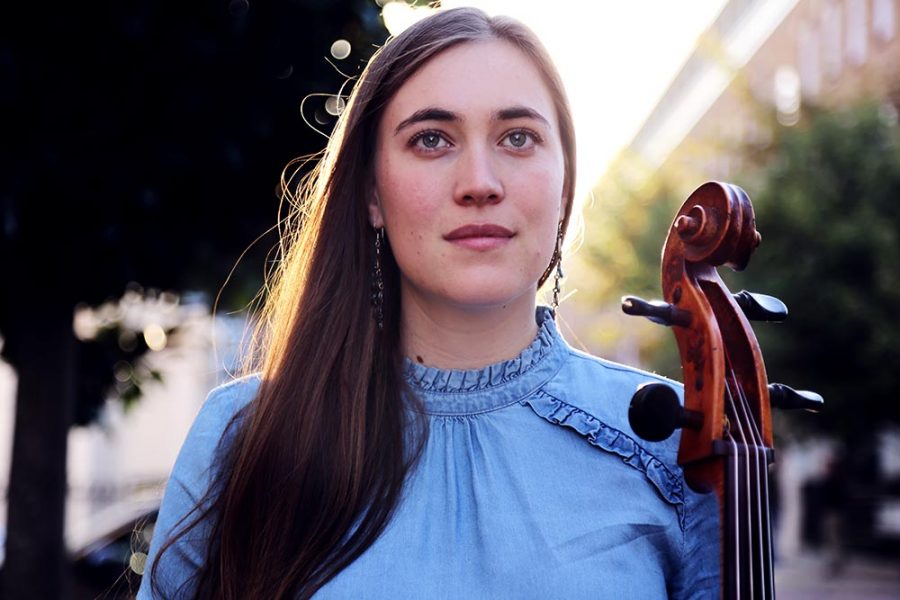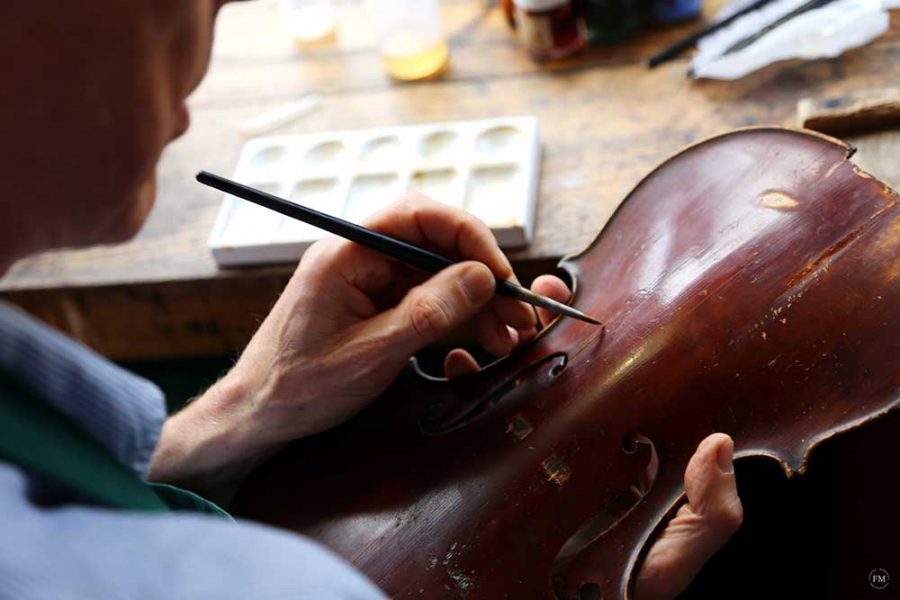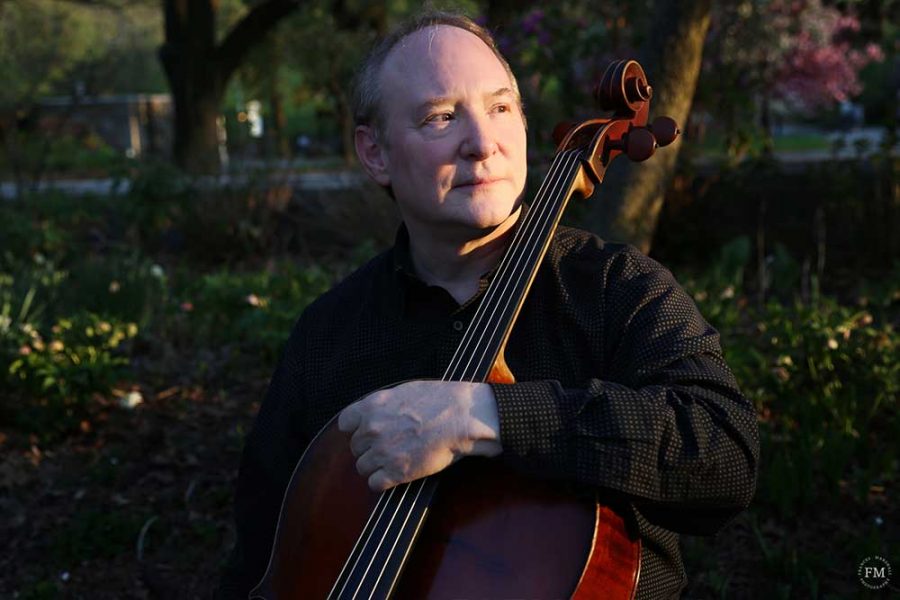Exploring the Craft: Guitar Salon International

April 2015
Words by
Emer Nestor
Photos by
Frances Marshall
Guitar Salon International is a globally recognized dealer of fine classical and flamenco guitars in Santa Monica, CA. GSI attributes its resounding success over the past 30 years to its unyielding commitment to ‘building close relationships with both the makers and players of these instruments, and always maintaining a profound respect for the art’
David Collett, president of GSI, speaks to us about his relationship with classical guitar music, and gives us some background into the hugely successful business itself.
It was as if the guitarist was himself an ensemble of multiple players, playing independent lines of music."

What attracted you to the guitar as a child?
My first instrument was the violin — I started playing at around 6 or 7. There was a little piece I had memorized called Au soir, which I loved and practised very hard. One day my teacher brought over another of her students from a different school who played the same piece on the viola. I heard him play and he was doing it all wrong — full of wrong notes (or so I thought!). But then my teacher asked us to play together and I heard the incredible blending of the two parts. There was suddenly a richness of harmony and counterpoint that was just overwhelming to me! To hear these two instruments supporting each other and entwining their melodies in such a manner gave the music added dimension and character. This was one of those moments that stays with you for life. I was forever changed as a musician after this.
What drew me to the guitar was the way in which one player could do all of this on one instrument. It was as if the guitarist was himself an ensemble of multiple players, playing independent lines of music. When I finally started playing the guitar more seriously (much later — in high school) my motivation was to make the individual lines of music sound as if they were being played by multiple guitar players — a kind of illusion for the listener. Of course in high school I was also playing other kinds of music. I played both standup bass and electric bass guitar in the high school jazz band, and in a rock band with friends.
As a student how did you feel about the way in which classical guitar music was taught?
Well the younger generations of students now have a huge advantage over my generation — YouTube! When I was a student I would get a lesson at most once per week, for an hour or so, and then I’d have to retain everything and practise hard by myself, alone for the rest of the week. With YouTube now — you can watch pieces being played by all the great virtuosi of the past 50 years — all at the click of a mouse, which is highly informative and helpful for students wanting to see how the masters do it. Back in my day I had to supplement my lessons by going to concerts and hopefully getting a seat close enough to see the players’ fingers moving. YouTube makes this accessible 24 hours a day now.
Having studied music at university level, and then continuing on with Celin Romero, was a career in performance ever an option?
It was while I was at university where I focused on classical guitar as my exclusive instrument. I was fortunate enough to be admitted as a student of Romero and I took that opportunity to dedicate myself 100% to the classical guitar, and not waste any of my valuable practise time putzing around on other instruments! I never had any desire though to pursue performance as a profession. I actually double-majored (in music and economics) so that after graduating, I’d be hirable! However I did know that whatever I did, I wanted to always remain involved with the classical guitar. And here I am at GSI, so it all worked out perfectly!
Tell us about your involvement with GSI and how you came to be president?
While I was a student of Celin, he had told me of Tim Miklaucic (who had previously also been a student of Celin’s), and the company he’d started called GSI. It was a very successful, but small, dealership at the time — this would have been back in the early 1990s. So it gave me the idea of eventually getting involved. After university I had a few years of drifting — traveling and living abroad, etc… It wasn’t until 2000 that I finally contacted GSI, met with Tim and got started. I’ve been here 15 years now, and as the company grew (and eventually split into 3 companies – a manufacturing company, wholesale/ distribution and retail) — I grew more into the retail side of it, which is GSI.
How important is it to the philosophy of GSI that all of its staff play guitar?
It’s very important that anyone in touch with artists or even our customers do indeed play the guitar. Some of the staff here (like in accounting or shipping/receiving) don’t necessarily need to play, but it’s important that even our photographer and videographer are guitarists — this gives them the advantage of helping to communicate aspects about these guitars (the kinds of things that guitarist enthusiasts care about). It’s the same with the salesmen here — when discussing instruments by phone or in person with a prospective client, there has to be a shared passion for the instrument that can only come from someone who plays.

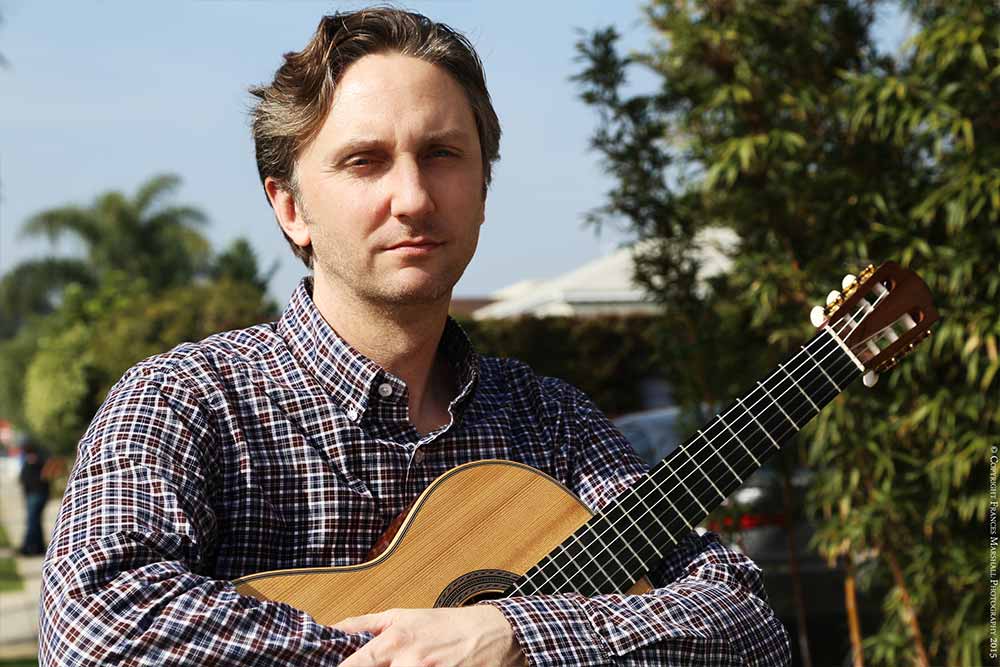


We've had to keep up with changes in technology. With the rise of the internet, we're now able to publish high-quality videos of guitar demonstrations somewhat regularly."

Has the classical guitar business changed over the last 10 years?
Yes. We’ve had to keep up with changes in technology. With the rise of the internet, we’re now able to publish high-quality videos of guitar demonstrations somewhat regularly. Social media is also very important, since this is largely how many people get information about the world. In the past we used to do more print, but we now devote more time to regular web marketing.
Is the field of classical guitar playing popular in LA?
Yes, there’s a lot of classical and flamenco guitar activity in LA. There are several fine university programs in the area that attract some of the top young players from around the world.
What type of performer does GSI attract?
We do a great number of video demonstrations — and for this, we need great players. As I write this, we currently have over 5.5 million views (and over 15,000 subscribers) on our YouTube channel alone. We also put videos up on other platforms such as Vimeo. We have players of all levels come in to us — young teenagers who are competing seriously, to graduate students, to professional players. We have also filmed live events held in our showroom, and have had such celebrities as Pepe Romero, Scott Tennant, Adam Del Monte, Adam Holzman, Andrew York, Marc Teicholz and many others contribute their playing so that we can produce highly entertaining, educational, videos that reach a maximum number of people around the globe.



How does GSI go about sourcing its instruments?
We specialize in 2 types of guitar for the most part — the old, vintage, historical, collectible guitars, as well as new instruments built by the top living luthiers. We source both types from literally all over the world. I do a decent amount of travel to locate the old guitars and to meet contemporary builders. But thanks to the internet, email, etc… it’s getting easier to have high quality images and video sent to us, so that we have a pretty good idea of what a guitar is before we’ve seen it in person. Shipping companies like UPS make it very easy to get guitars to us quickly and safely as well.
What does the guitar making process involve?
Guitar building is an entire speciality unto itself — books have been written, courses are offered, many times apprenticeships are recommended or even mandatory (depending on what country you’re in), and even then it takes most guitar makers many years of experience before they begin to feel that they are in command of the craft. Although I’ve visited a great number of workshops, I’ve never personally built a guitar myself. It’s a very demanding specialty and the best builders in the world typically are only able to make between 8-12 guitars per year, even working at it full-time. Some makers are open to suggestions from their intended players and others prefer to work in isolation with no outside interference. This, like many other qualities of instrument building, is personal to each maker.
Which instruments hold the most interest/value for you from the collection?
There are three historical builders whose guitars are the primary target of serious collectors and aficionados, and are the dream of most players. I group these makers together since their guitars regularly sell for over $100,000. This top tier includes Antonio de Torres (1817-1892) from Spain, Hermann Hauser I (1882-1952) from Germany, and Robert Bouchet (1898-1986) from France. The next tier includes other, mostly later historical builders such as Domingo Esteso, Santos Hernandez, Hernandez y Aguado, Francisco Simplicio, and Enrique Garcia. Of the contemporary luthiers we work with, some top names would include Edmund Blochinger, Daniel Friederich, Andrea Tacchi, Dominique Field, Fritz Ober, Enrico Bottelli, amongst others. So really we deal in two categories — the vintage/collectible as well as the most relevant contemporary makers.
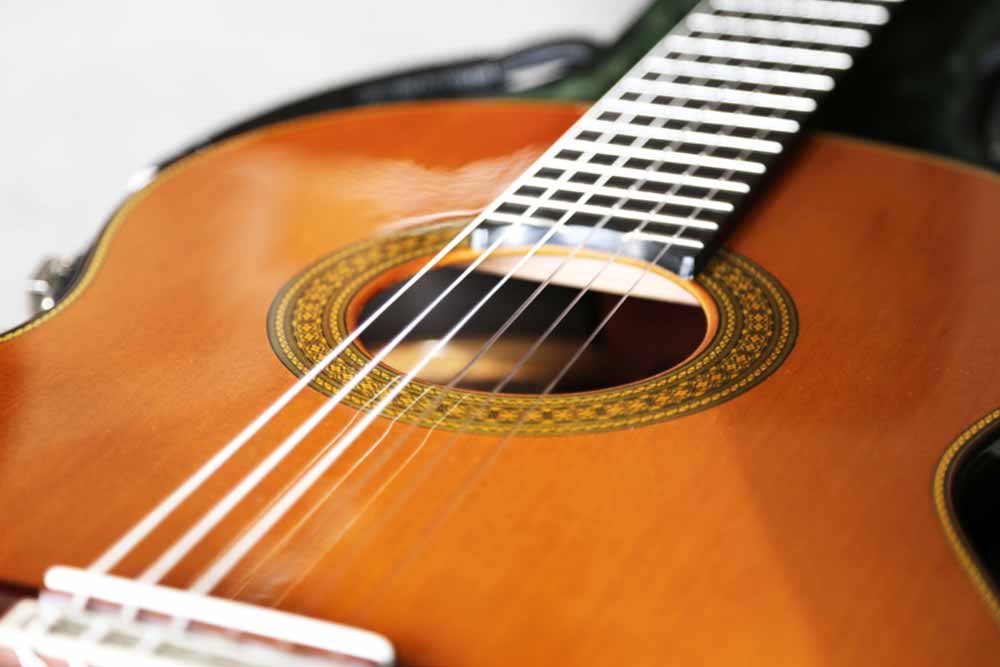

GSI has a commendable presence in the community education sector; can you give us more detail on this?
Well our goal isn’t simply to sell guitars, it’s also to educate the community about them. While we have each guitar here we try to give them as much public exposure as possible — by doing detailed photography, videos, or to use them in live concerts where the public can come and learn about them in a more up-close-and-personal way. As far as providing tutorials to student players — a good friend of ours, Scott Morris has published two books called Classical Guitar Complete, and he comes in regularly to our facility to film video lessons out of his book, which we publish on our blog. Kai Narezo (our videographer) has also done a series of videos on flamenco technique. We have the guest artist in from time to time to give a lesson — Adam Del Monte’s ‘fast scales’ lesson is our most popular YouTube video of all time with over 200,000 views to date! We also have a non-profit Foundation which raises money, largely by either cash donations or guitar donations (that are sold) to fund school music education programs in need. All of this information is on our site. So music education at all levels is very important to us and we try to have a presence wherever we can.
Tell us about GSI’s involvement with classical guitar in Europe.
Europe is where we have the most activity. Our staff personally travel back and forth many times per year to France, Spain, Germany, etc…largely to meet with clients and guitar builders, or to attend important events related to the guitar.
What lies ahead for GSI?
We are always looking to grow our core business. This year we hired 3 new employees to help with this — not simply to buy and sell more guitars but also to spread good quality information to the public at large — mainly via the web, through great photography, video demonstrations, travel stories, interviews with luthiers and players, etc…
Are there any new exciting recording projects on the cards?
For the most part we’re finding that doing high-quality audio/video recording of single pieces, demonstrating individual guitars by top players, then releasing them on the web, has been the new medium for recording consumption at large. As I already mentioned, our YouTube page alone has over 5.5 million views and almost all the videos are performances. We want to do more of this, including releasing more in-house concerts of live performances recorded here.
To find out more about Guitar Salon International see: www.guitarsalon.com
All images displayed in this article are subject to copyright.
Share this article


